What is mushroom poisoning, how is it manifested? Measures and first aid procedure
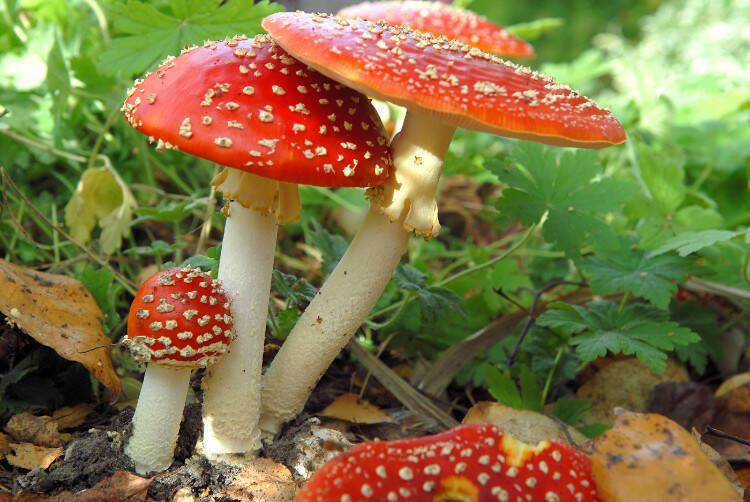
Mushroom poisoning is one of the most common types of poisoning ever. It is most often encountered during the mushroom harvest season.
Article content
- Mushroom poisoning and the breakdown of types of poisoning
- 1. Hepatotoxic type of poisoning
- 2. Neurotoxic type of poisoning
- 3. Gastroenteric type of poisoning
- 4. Vasotoxic (coprine) type of poisoning
- What to do if you suspect mushroom poisoning + How to do first aid
- How to prevent poisoning from happening?
Mushroom poisoning, why does it occur?
You ask:
What is mushroom poisoning?
How does intoxication manifest itself?
What are the precautions and first aid for mushroom poisoning?
What to do if intoxication is suspected?
The reason for this is the rampant collection of mushrooms by amateur mushroom pickers. The lack of knowledge of the general public results in sometimes fatal mistakes.
Let's take a closer look at the different types of poisoning together.
The differences between edible and inedible mushrooms are sometimes subtle. And so health damage and mushroom poisoning can easily occur.
However, health problems do not necessarily occur only after eating poisonous mushrooms. Even edible ones have a toxic effect on humans under certain circumstances.
When should we think about possible mushroom poisoning?
Mushroom poisoning and the breakdown of types of poisoning
Mushroom poisoning occurs quite often.
The danger lies in the lack of awareness of amateur mushroom pickers about the toxicity of the different mushroom species. These are divided into highly toxic, toxic and harmful.
Their toxicity lies in the toxins contained directly in the mushroom or in the breakdown products, which are produced by improper storage or food preparation.
People can also harm themselves by ingesting edible but old, mouldy mushrooms or mushrooms infected with a parasite. Less common is contamination by animal excrement or spray.
Each fungus contains different types of toxins and therefore the symptoms vary considerably.
Also, the symptoms of poisoning may not occur immediately.
Some intoxications also occur several hours to days apart. Therefore, it is always important to think back to eating mushrooms, even if it was a week ago.

There are a large number of poisonous mushrooms, and poisoning with each of them has its own specifics. To summarize, we use a categorization of the different types of poisoning, which divides them based on the predominant symptoms. It narrows down the range of suspected mushrooms and makes it easier to differentiate which specific species may have caused the intoxication.
There are, of course, also more detailed and professional classifications. Despite the different categorisations, there are many poisonings that are combined. Therefore, the clinical picture may not correspond exactly to a particular category.
1. Hepatotoxic type of poisoning
Hepatotoxic type of poisoning is one of the most dangerous types of poisoning.
This is because the toxins act directly on the liver, causing severe toxic liver damage, and the condition can end in hepatic (liver) coma with subsequent death of the patient.
The most dangerous and poisonous fungus found not only in Europe and North America is the green toadflax (Amanita phaloides). It is often mistaken for mushrooms and causes liver damage.
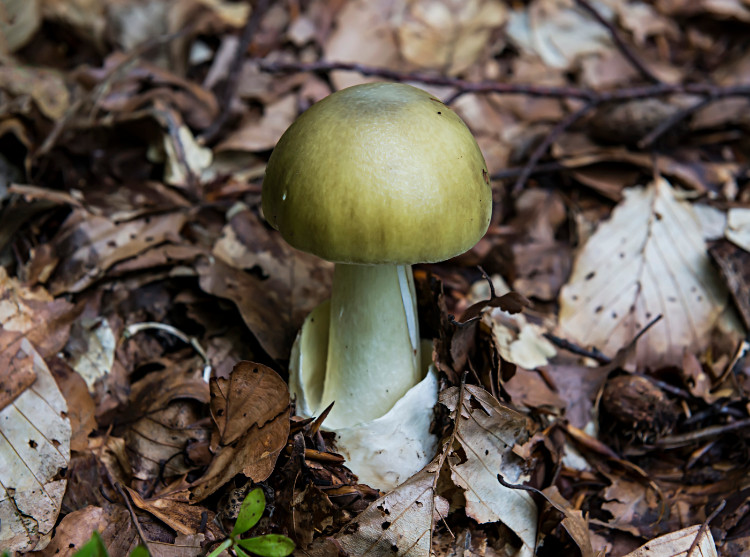
The green toadflax contains a mixture of peptic poisons (amatoxin, phalotoxin) which, due to the long latent phase, are completely absorbed into the body.
The latency period is up to 8 to 12 hours.
Latency = delay in the onset of symptoms and signs of poisoning.
A single fruiting body weighs 30 to 60 g. 50 g of this fungus is sufficient to kill an adult human weighing approximately 60 kg.
Children are most at risk, as a smaller dose is sufficient for them. Pregnant women are at risk of fetal harm and breastfeeding mothers excrete toxins into breast milk, which can cause the death of the baby.
Manifestations of hepatotoxic mushroom poisoning
Initially, the patient experiences general weakness, malaise, chills, palpitations and heaviness. Severe headache, dizziness and tinnitus are associated.
Pain also begins to appear in the stomach and spreads to the whole abdomen.
In addition to other symptoms, there are also symptoms of gastroenteritis-type poisoning with nausea, vomiting and diarrhoea.
The patient gives the impression of horror mortis (face before death).
He is weak, sickly, markedly pale, hypothermic, cold and clammy, sweating. The face is sunken, the features sharpened, the nose pointed.
The condition without improvement persists for about 3 days, if the patient survives.
Subsequently, there is pain in the liver region (below the right rib arch). The skin colour changes from pale to icteric (yellow) due to liver damage and the untreated patient dies of liver failure.
2. Neurotoxic type of poisoning
Neurotoxic type of poisoning is the second most serious type of poisoning after hepatotoxic.
It is caused by indole neurotoxins contained in certain species of fungi. The main representative is the red toadflax (Amanita muscaria). Among the toadflaxes, the lemon yellow toadflax (Amanita citrina), the porphyry toadflax (Amanita porphyria) and the tiger toadflax (Amanita pantherina) are also present.
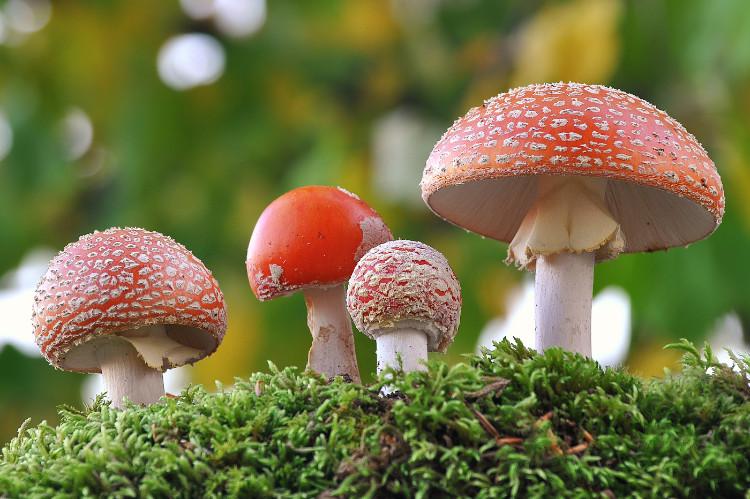
It is also induced by the stiff-legged creeper (Clitocybe galinacea), the coppery threadworm (Inocybe aeruginascens), the white-headed downy mildew (Lycoperdon candidum), the velvetleaf milfoil (Conocybe), the scaly milfoil (Gymnopilus), and the collar milfoil (Stropharia).
Most (but not all) neurotoxin-containing fungi are found in well fertilised soils (excreta, decomposing plant debris).
The toxins they contain are thought to be analogues (substitutes) of serotonin (the happiness hormone) and have similar effects to LSD. They are also used in research and in psychiatry to produce drugs.
They are often abused by so-called mycotoxicomaniacs who use the influence of neurotoxins to induce various states (in the past, shamans).
However, intoxication by some mushrooms with indole neurotoxins often results in death of the abusers, as the ratio of toxins acting on the central nervous system varies from mushroom to mushroom.
Manifestations of neurotoxic mushroom poisoning
Poisoning manifests itself in perceptual disturbances, mainly in the visual and auditory sense. At first, vision is unusually good in the distance, colours become more intense and auditory acuity improves.
Later, there are disturbances in distance estimation and changes in the perception of objects, persons and shapes.
Pseudohallucinations occur when the eyes are closed - sparks, flashes, lights, colours or even different objects are seen. Pseudohallucinations persisting after opening the eyes are a sign of severe intoxication.
General symptoms include dizziness, impaired stability and coordination of movements, palpitations, nausea, weakness, vomiting, dry throat. Vomiting is almost non-existent.
3. Gastroenteric type of poisoning
Gastroenteritic type of poisoning is also the most common type as it is caused by the largest number of fungi.
This includes some species of mushrooms (Agaricus), pigeon pea (Russula), soapwort (Tricholoma saponaceum) and cowpea (Lactarius torminosus).
The name already implies that this type of intoxication affects the digestive tract and is manifested by its disorders.
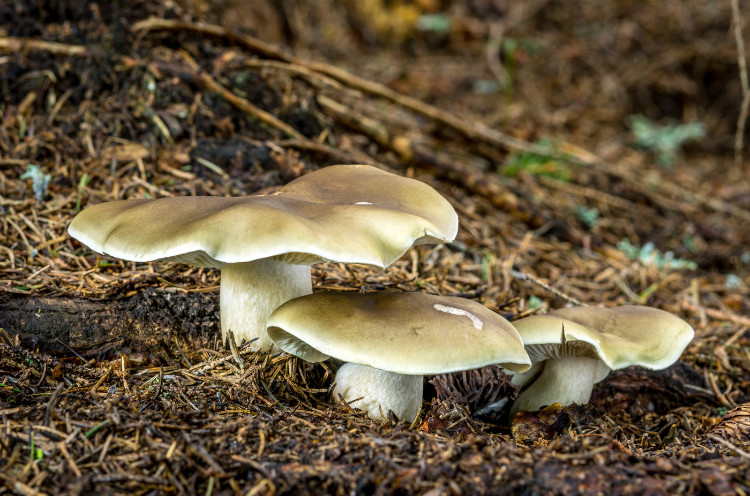
The insidiousness lies in the fact that other types of poisoning may also manifest symptoms of gastrointestinal damage in addition to their basic clinical manifestations.
It is important to assess whether the patient has only isolated digestive disorders or whether other symptoms typical of other types of poisoning are also present.
In essence, it is not intoxication as such. Rather, it could be said to be digestive irritation.
It does not directly threaten the patient's life and the condition improves spontaneously.
Manifestations of the gastrointestinal type of mushroom poisoning
The basic clinical manifestation is toxic gastroenteritis (inflammatory reaction of the stomach and intestines). It is often confused and misdiagnosed as gastroenteritis of bacterial or viral etiology (cause), which manifests itself in the same way.
This misdiagnosed causative agent also becomes mistreated. Therefore, information about the ingestion of mushrooms in the antecedent is important in the correctness of diagnosis and therapy.
The most common manifestations include:
- Nausea
- nausea - feeling like vomiting
- persistent vomiting
- twisting bowel movements
- crampy abdominal pain
- diarrhoea
It is dangerous in the elderly because of the rapid onset of dehydration that puts them at risk.
Similar symptoms to gastroenteritic types of mushroom poisoning are observed in some food or even water poisoning. The clinical course is very similar to salmonellosis, typhoid fever, E. coli - i.e. diarrhoeal diseases typical in Pharaoh's Revenge.
4. Vasotoxic (coprine) type of poisoning
The vasotoxic type of poisoning is characterized by the fact that it occurs only when a normally edible mushroom is ingested in combination with alcohol.
Do not combine mushrooms with alcohol!
It produces a reaction that is identical to that of alcohol intoxication and the simultaneous use of antabuse (a drug to treat alcohol dependence).
It is caused by the inkweed (Lat. Coprinus inkoustaria), but also by other species of dung beetles such as the eminent dung beetle (Coprinus alopecia), the glittering dung beetle (Coprinus micaceus), the spotted dung beetle (Coprinus picaceus) or the stocky mushroom (Boletus torosus).
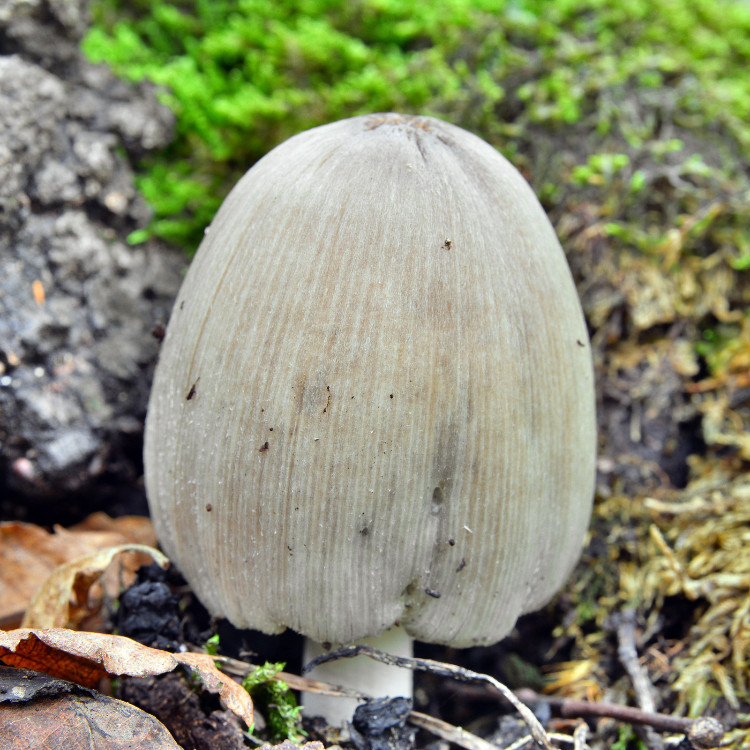
They contain a substance called coprin, which derives its name from the name of the dung beetle itself, because it was first found in the dung beetle. Coprin is an inhibitor (retarder) of the enzyme acetaldehyde dehydrogenase. By slowing or stopping this enzyme, excess acetyldehyde is formed in the liver.
This should normally be further metabolised to acetic acid, which does not happen in coprine poisoning. The level of acetaldehyde also increases in the bloodstream and clinical signs of poisoning occur.
Manifestations of vasotoxic mushroom poisoning
In vasotoxic poisoning we speak of early intoxication.
The latency period until the first symptoms appear ranges from a few minutes to about 3-4 hours.
Acetaldehyde causes excessive blood flow to the skin, which is manifested externally by redness mainly of the face and neck.
Blood pressure drops rapidly, resulting in possible collapse.
The action of the heart speeds up, sometimes becoming irregular, and is the cause of various heart rhythm disturbances.
The patient feels heart palpitations, has a feeling of lack of air, trembling.
The condition is accompanied by vegetative symptoms such as excessive sweating, nausea, nausea, vomiting, dizziness.
Let's look together at all the summer problems:
Our health in summer - sun, heat, injuries and illnesses
What to do if you suspect mushroom poisoning + How to do first aid
The most important thing to think about is that the difficulties that have arisen, in an individual, can be caused by the consumption of poisonous mushrooms.
The time between the ingestion of the toxins and the appearance of the first symptoms also plays an important role.
In some cases with a short latent phase, inducing vomiting is most important. This is only relevant if the mushrooms have not been digested - within 30 minutes of consumption.
This allows the undigested mushroom residues and toxins to be removed from the body and prevents further exposure to the noxa.
We never induce vomiting in a person with impaired consciousness!
After the stomach contents have been expelled, it is recommended to take black charcoal to absorb the remaining toxins from the digestive tract.
Subsequently, fluid intake should be increased to help speed up the flushing of absorbed toxins into the body. In gastroenteritic type poisoning, they also rehydrate.
Medical attention should be sought immediately afterwards.
- Contact the Poison Information Centre
- induce vomiting - within 30 minutes of ingestion at the latest
- take black coal - absorbs toxins
- rehydrate the body - fluids also speed up the flushing of toxins
- seek medical attention as soon as possible
- contact the emergency services line, where you will be given instructions or be put through to toxicology
- if the person's health requires it, they will send help
- this will be assessed by an emergency operator
- if the person's health requires it, they will send help
How to prevent poisoning from happening?
If you are not an experienced mushroom picker, it is better to buy these foods from the store.
This will prevent possible poisoning.
If foraging for mushrooms is still one of your hobbies, it is best to go into the forest with an experienced person who knows the slight differences between edible and poisonous species.
The mushrooms you collect should be cleaned and sorted.
You need to double-check, either in a book or on the internet, every unknown mushroom and those you are not sure about. It won't take much time and you will protect yourself from danger.
You can also find the correct storage and preparation methods in the right literature.










